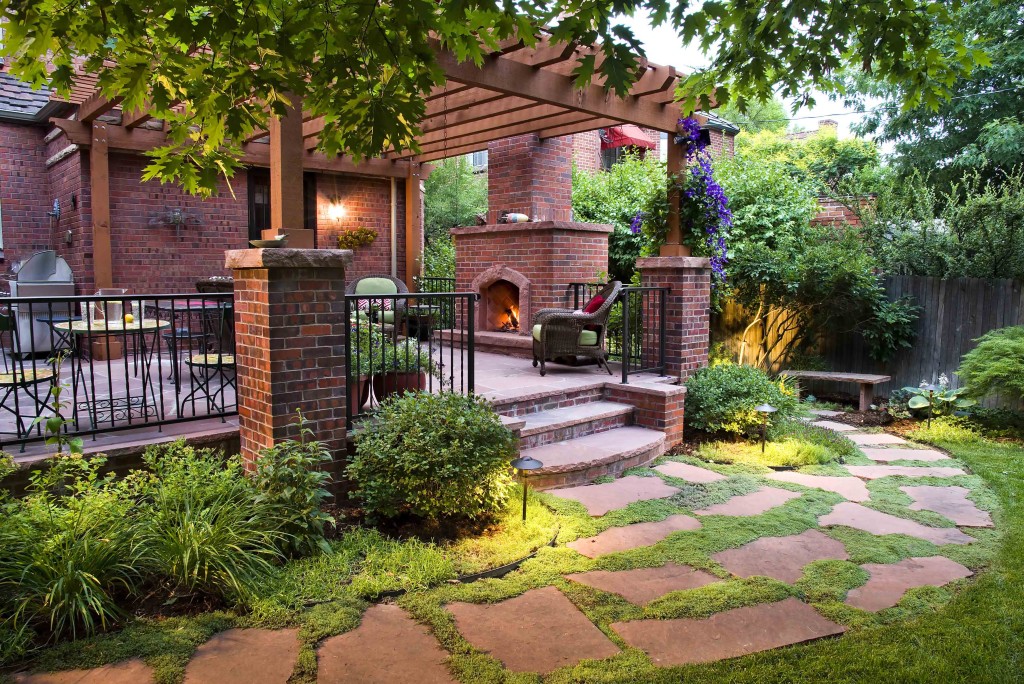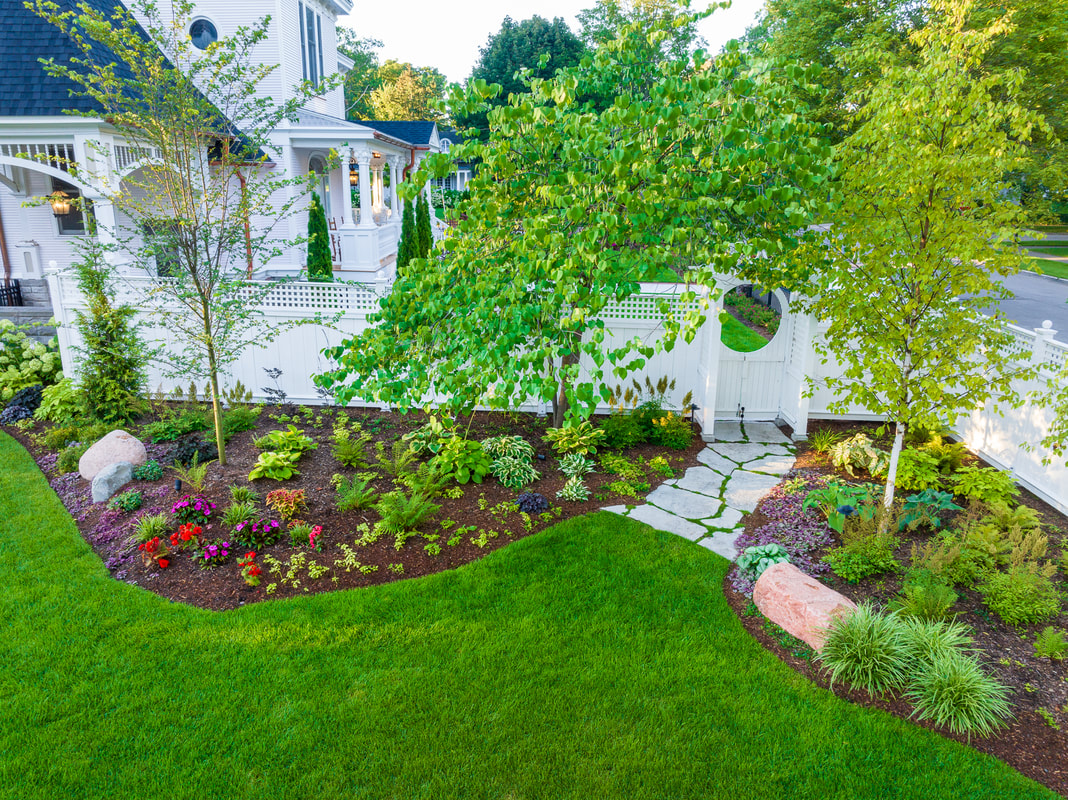Hilton Head Landscapes Can Be Fun For Everyone
Table of ContentsThe Single Strategy To Use For Hilton Head LandscapesAll About Hilton Head LandscapesThe Of Hilton Head LandscapesThe Basic Principles Of Hilton Head Landscapes The smart Trick of Hilton Head Landscapes That Nobody is DiscussingNot known Incorrect Statements About Hilton Head Landscapes Hilton Head Landscapes - TruthsThe Ultimate Guide To Hilton Head Landscapes
Form compatibility is also a major part of unity in designone or 2 noticeably various kinds are excellent for comparison and emphasis, but generally all various other kinds must have some resemblances for a linked appearance. Texture refers to just how rugged or great the surface area of the plant or hardscape material feels and/or looks.
Examples of plants with crude appearance include philodendrons, agaves, bromeliads, hollies, hands, and hydrangeas. Hardscape with coarse texture includes rough-cut rock, rough-finished block, and unfinished timber with knots and an increased grain. Aged or old building and construction product that maintains a weather-beaten surface is typically coarse in structure. Attributes that produce great texture consist of small vegetation; thin, strappy leaves (turfs) or high, thin stems; tiny, dense twigs and tiny branches; long stems (vines); and small, delicate blossoms.
What Does Hilton Head Landscapes Mean?
The majority of plants are medium texture, in that they can not be explained as having either rugged or great texture. They are defined by medium-sized fallen leaves with straightforward shapes and smooth edges. The average-sized branches are not densely spaced nor widely spaced, and the overall type is usually rounded or mounding. Medium-textured plants function as a history to web link and link the crude- and fine-textured plants.

To make a space feel smaller sized, put the coarse structures along the outer border and the fine textures closest to the viewer. The information of the crude appearance makes the plants show up closer and makes the room really feel smaller sized. The viewed structure of plants can likewise alter with the distance from the plant.
Unknown Facts About Hilton Head Landscapes
Vibrant shades increase the contrast and make the appearance appear coarser, while muted colors can squash appearance. Hardscape with a crude texturesuch as extremely harsh rocks and vibrant, huge timberstends to make all plant product appear much more average textured. Developers usually create a structure study (Number 8) theoretically to assist choose the arrangement of plant products.
Shade in plant product and hardscape adds interest and selection to the landscape. Color is the most noticeable component in the landscape and is usually the emphasis of the majority of house owners; however, it is additionally the most short-term aspect, usually lasting just a few weeks a year for specific plants.
The Ultimate Guide To Hilton Head Landscapes
A straightforward description of the shade wheel includes the three primaries of red, blue, and yellow; the 3 additional colors (a mix of two primaries) of eco-friendly, orange, and violet; and six tertiary shades (a mix of one adjacent primary and additional shade), such as red-orange. Shade concept explains the connection of shades to every other and exactly how they must be made use of in a structure.

Similar (sometimes called harmonious) color pattern are any type of 3 to five colors that are nearby on the color wheel, such as red, red-orange, orange, yellow-orange, and yellow, or blue, blue-violet, and violet (landscaping hilton head sc). The colors are related to each other because they normally include two primaries blended to develop an additional and two tertiary colors, which implies they share common homes
Corresponding shades are often found naturally in blossoms; an usual set is yellow and violet. Color is found in the blossoms, vegetation, bark, and fruit of plants.
Some Ideas on Hilton Head Landscapes You Need To Know
Eco-friendly foliage in all its various tones is the dominant shade by quantity, yet other shades record interest quicker as a result of their high comparison to the shade eco-friendly. Color is additionally discovered in buildings, rocks, pavers, wood, and furnishings. Many shades in natural products, such as stone and wood, are typically low-key and tend to be variants of brown, tan, and light yellow.
Color is an essential element for creating rate of interest and selection in the landscape. Shades have residential or commercial properties that can impact feelings, spatial understanding, light high quality, equilibrium, and focus. One building of shade is defined loved one to temperaturecolors seem cool or warm and can influence feelings or sensations. Trendy shades often tend to be relaxing and need to be made use of in locations for relaxation and serenity.
The Hilton Head Landscapes Ideas
The "temperature" of colors can also impact the assumption of range. Awesome colors have a tendency to decline and are regarded as being further away, making a space feel larger. Warm colors have a tendency to breakthrough and are perceived as being closer, making a space feel smaller. Color can also be utilized to catch interest and straight views.
As an example, brilliant yellow, which has the greatest intensity, also has a high contrast with all various other shades (usually described as a "pop" of shade) and need to be made use of moderately. A tiny quantity of intense color has as much aesthetic weight as a big amount of an extra other restrained or weaker color.
Similar (often called harmonious) color design are any type of three to five colors that are adjacent on the shade wheel, such as red, red-orange, orange, yellow-orange, and yellow, or blue, blue-violet, and violet. The colors relate per other because they typically consist of two primaries blended to develop an additional and 2 tertiary colors, which means they share usual properties.
The Main Principles Of Hilton Head Landscapes
Complementary colors are usually found naturally in flowers; a typical pair is yellow and violet. Color is discovered in the flowers, vegetation, bark, and fruit of plants.
Environment-friendly vegetation in all its numerous tones is the leading shade by quantity, however other colors catch interest quicker since of their high contrast to the color eco-friendly - Landscaping bluffton sc - https://pxhere.com/en/photographer/4299392. Shade is likewise found in buildings, rocks, pavers, timber, and furniture. The majority of colors in all-natural products, such as stone and timber, are generally low-key and tend to be variations of brownish, tan, and pale yellow
The Definitive Guide to Hilton Head Landscapes
Color is an essential aspect for developing passion and variety in the landscape. Colors have homes that can impact feelings, spatial understanding, light top quality, equilibrium, and focus. One building of color is described relative to temperaturecolors appear to be cool or warm and can affect feelings or sensations. Cool shades often tend to be calming and need to be used in areas for relaxation and serenity.
The "temperature" of shades can also influence the understanding of distance. Cool shades have a tendency to recede and are regarded as being further away, making a space feel bigger. Cozy colors often tend to advance and are regarded as being better, making a space really feel smaller. Shade can also be made use of to catch attention and straight sights.
As an example, bright yellow, which has the highest possible strength, also has a high comparison with all various other colors (commonly called a "pop" of color) and should be conserved. A percentage of extreme color has as much aesthetic weight as a large amount of an extra subdued or weak shade.